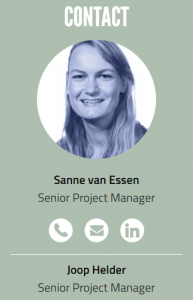SCREENING WAVE CONDITIONS FOR THE OCCURRENCE OF GREEN WATER EVENTS ON SAILING SHIPS
 Design loads for extreme wave events on ships, such as slamming and green water, are hard to define. These events depend on details in the incoming waves, ship motions and structure layout, which requires high-fidelity tools such as CFD or experiments to obtain the correct loads. These tools (presently) do not have the capability to fully resolve the long-term statistics of rare events in all metocean conditions over the ship’s lifetime. The idea of ‘screening’ is to use lower-fidelity numerical methods to identify the occurrence of extreme load events based on an indicator. A good indicator has a strong correlation to the design load, but is easier to calculate. A high-fidelity tool can then be used to find the loads in these events. The low-fidelity statistics and the high-fidelity loads can be combined to define a design load and its probability. The present study compares different numerical screening indicators for green water loads on a containership against experiments. The quality of the identification of the critical events and the required computational time served as comparison metrics. This showed that screening both with potential flow tools and with coarse mesh CFD tools is feasible, provided the indicator, grid, time step and wave input settings are well chosen. The results from coarse mesh CFD are slightly better than from potential flow, but the computational costs are much higher. The results also show that the peaks and steepness of the relative wave elevation around the bow are suitable green water load indicators, as well as the undisturbed wave crests at the bow. Fine mesh CFD calculations were done for the identified events based on an example indicator, which resulted in a green water load distribution very close to that of the experiments. This study shows that screening could potentially reduce the required high-fidelity modelling time with up to ∼90% compared to common practice.
Design loads for extreme wave events on ships, such as slamming and green water, are hard to define. These events depend on details in the incoming waves, ship motions and structure layout, which requires high-fidelity tools such as CFD or experiments to obtain the correct loads. These tools (presently) do not have the capability to fully resolve the long-term statistics of rare events in all metocean conditions over the ship’s lifetime. The idea of ‘screening’ is to use lower-fidelity numerical methods to identify the occurrence of extreme load events based on an indicator. A good indicator has a strong correlation to the design load, but is easier to calculate. A high-fidelity tool can then be used to find the loads in these events. The low-fidelity statistics and the high-fidelity loads can be combined to define a design load and its probability. The present study compares different numerical screening indicators for green water loads on a containership against experiments. The quality of the identification of the critical events and the required computational time served as comparison metrics. This showed that screening both with potential flow tools and with coarse mesh CFD tools is feasible, provided the indicator, grid, time step and wave input settings are well chosen. The results from coarse mesh CFD are slightly better than from potential flow, but the computational costs are much higher. The results also show that the peaks and steepness of the relative wave elevation around the bow are suitable green water load indicators, as well as the undisturbed wave crests at the bow. Fine mesh CFD calculations were done for the identified events based on an example indicator, which resulted in a green water load distribution very close to that of the experiments. This study shows that screening could potentially reduce the required high-fidelity modelling time with up to ∼90% compared to common practice.

